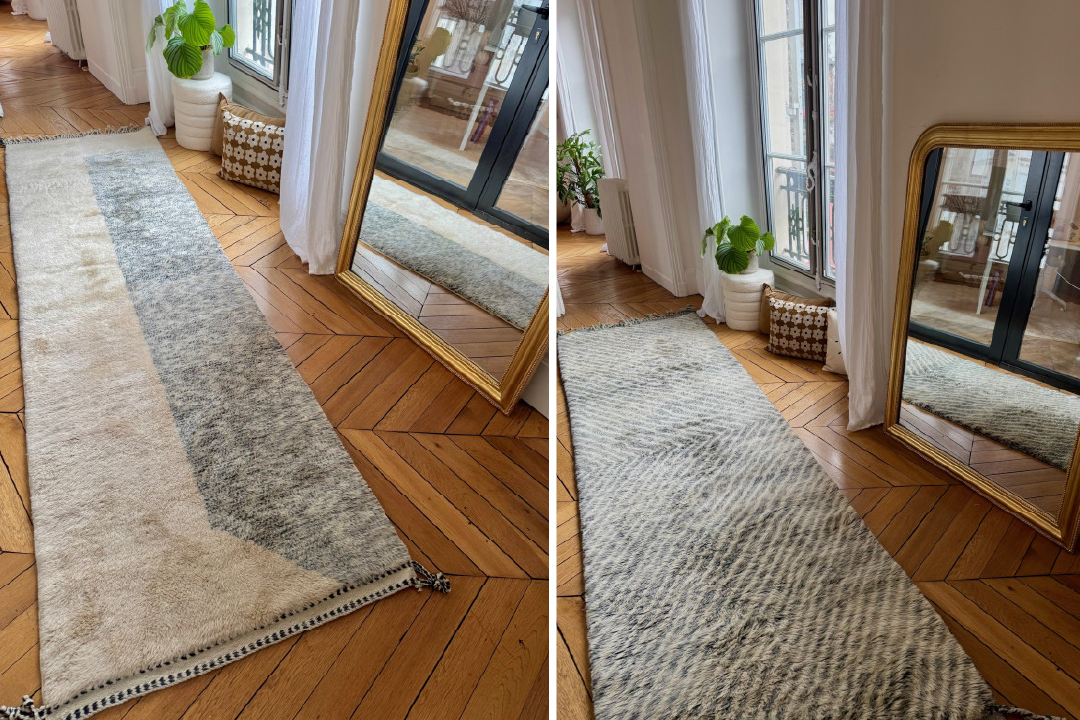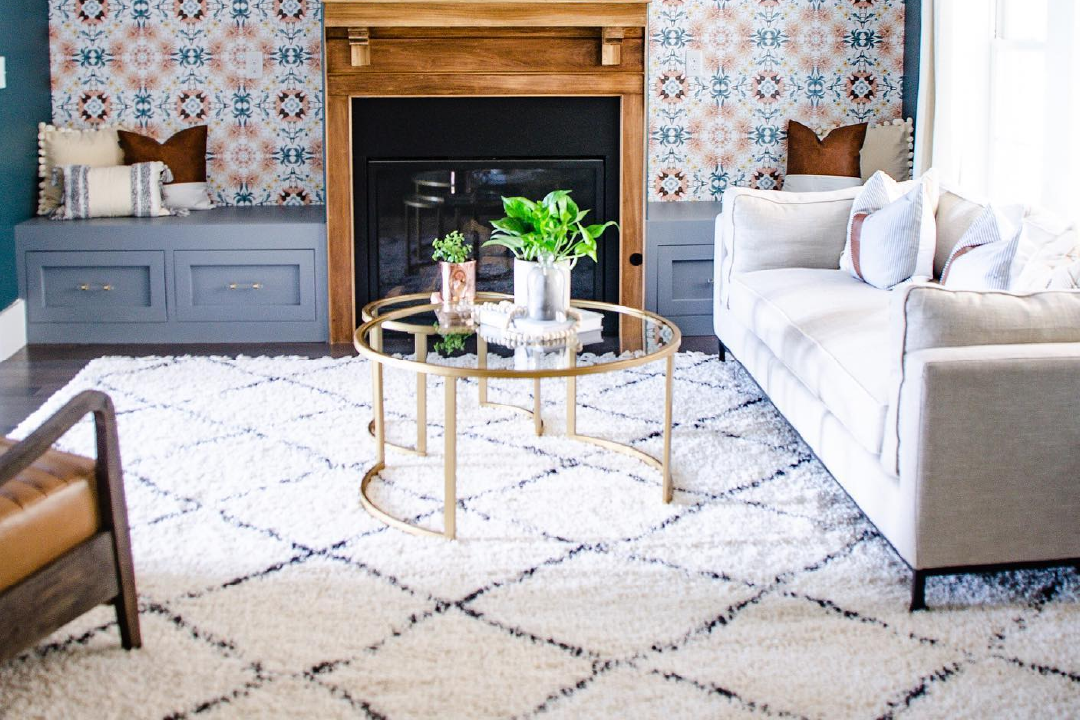Blog
Moroccan Rugs: The Ultimate Guide to Authentic Berber Artistry

Introduction
For centuries, Moroccan rugs have graced homes worldwide, telling stories of ancient traditions while adding unparalleled beauty to modern spaces. These masterpieces, handwoven in the Atlas Mountains by skilled Amazigh (Berber) artisans, represent more than just floor coverings—they embody centuries of cultural heritage, artistic expression, and traditional craftsmanship passed down through generations.
Each Moroccan rug carries within its fibers the rich history of the Amazigh people, whose weaving traditions date back over two thousand years. Originally created as practical items for warmth and comfort by nomadic and semi-nomadic tribes, these rugs have evolved into coveted pieces of art that seamlessly bridge the gap between ancient traditions and contemporary design.
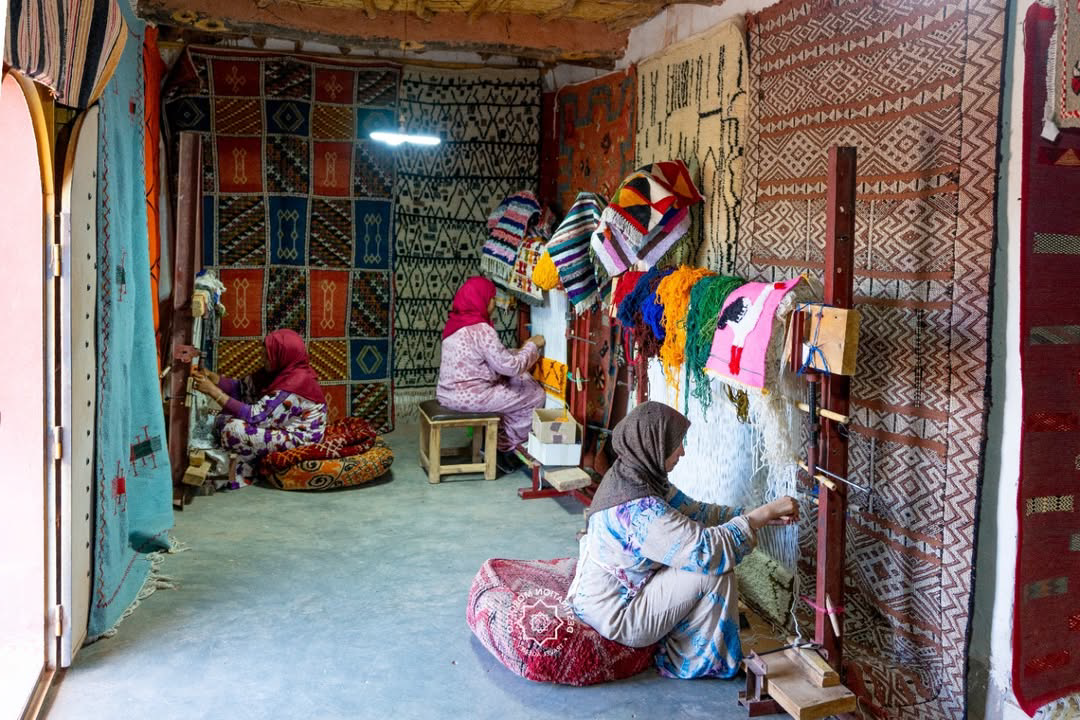
The Distinguished Types of Moroccan Rugs
Beni Ourain Moroccan Rugs
The most internationally recognized style, Beni Ourain rugs originate from a confederation of tribes in the Middle Atlas Mountains. These rugs feature minimalist designs with geometric patterns in black or brown on an ivory background, created from undyed wool of the local sheep. Their neutral palette and simple patterns make them extraordinarily versatile, perfectly complementing both traditional and modern interiors.
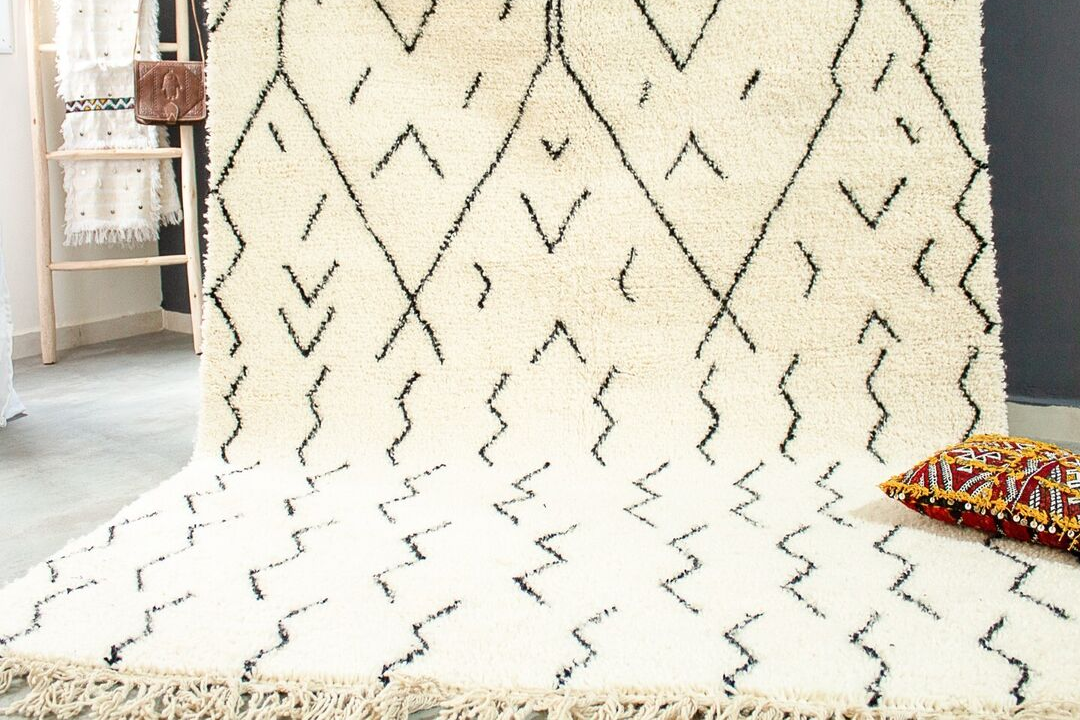
Azilal Moroccan Rugs
Hailing from the High Atlas Mountains, Azilal rugs showcase vibrant colors and abstract patterns that tell stories through symbols and geometric shapes. These unique pieces often incorporate elements representing fertility, nature, and daily life in the mountains. Unlike the minimalist Beni Ourain, Azilal rugs feature bold combinations of colors, creating dynamic focal points in any room.
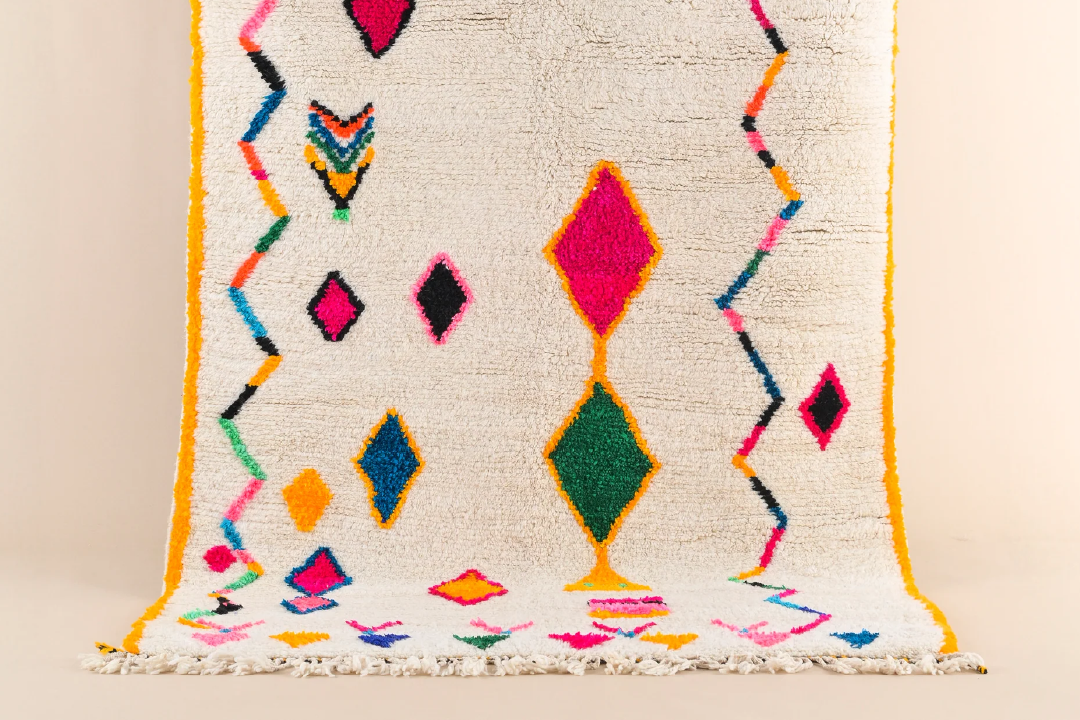
Kilim Moroccan Rugs
Distinguished by their flat-woven technique, Kilim rugs offer incredible versatility and durability. These rugs typically feature bold geometric patterns and bright colors, achieved through natural dyes. Their lightweight nature makes them perfect for both floor coverings and wall hangings, adding a touch of tribal sophistication to any space.
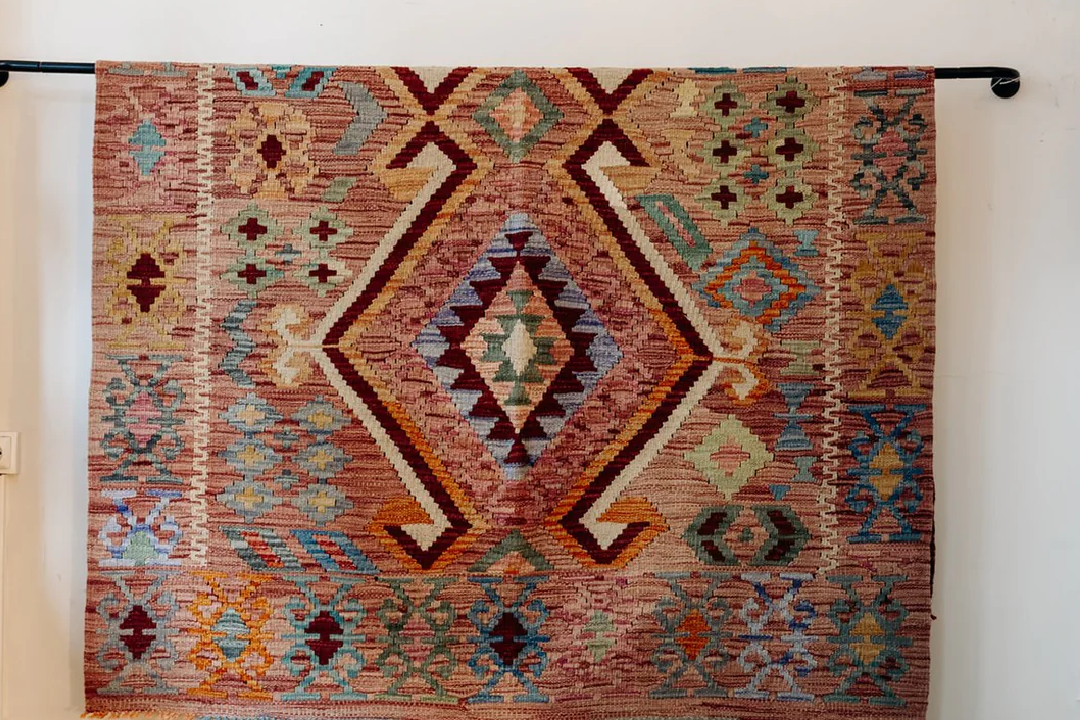
Boujaad Moroccan Rugs
Known for their pink and red hues, Boujaad rugs come from the central plains of Morocco. These pieces often feature abstract designs and asymmetrical patterns, created using a unique weaving technique that results in a slightly raised pile. Their warm colors and intricate designs make them statement pieces that can transform any room.
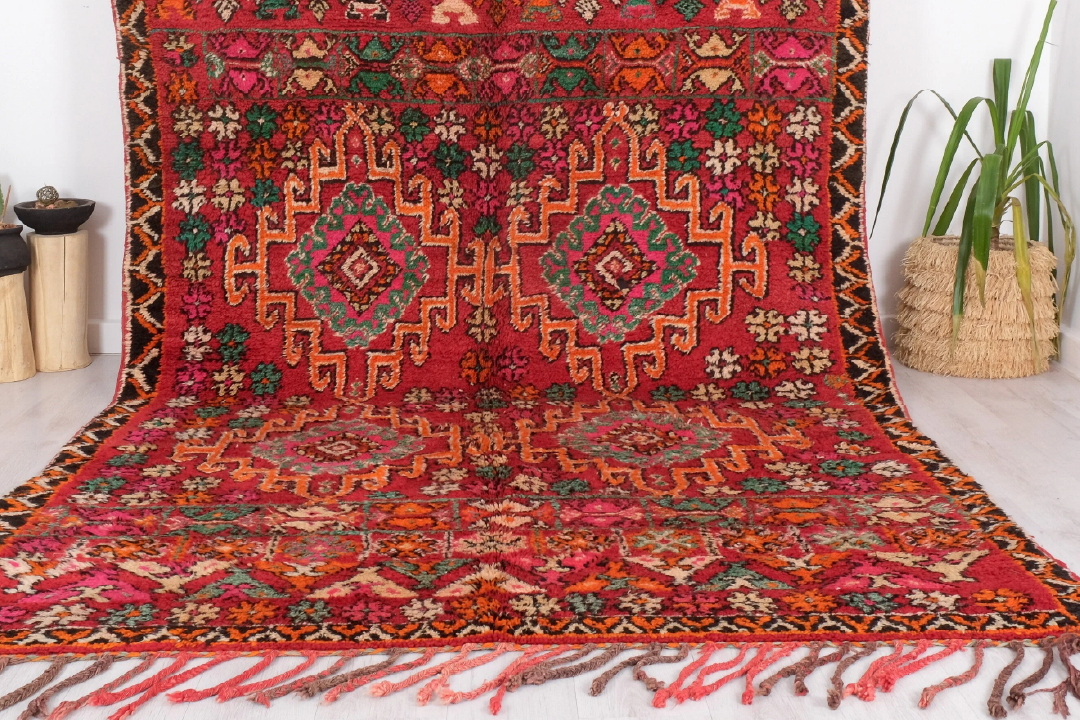
Boucherouite Moroccan Rugs
Born from necessity and creativity, Boucherouite rugs represent modern Moroccan innovation. Created from recycled textiles and fabric scraps, these colorful rugs showcase the resourcefulness of Moroccan weavers. Their playful patterns and bright colors make them popular choices for adding vibrancy to contemporary spaces.
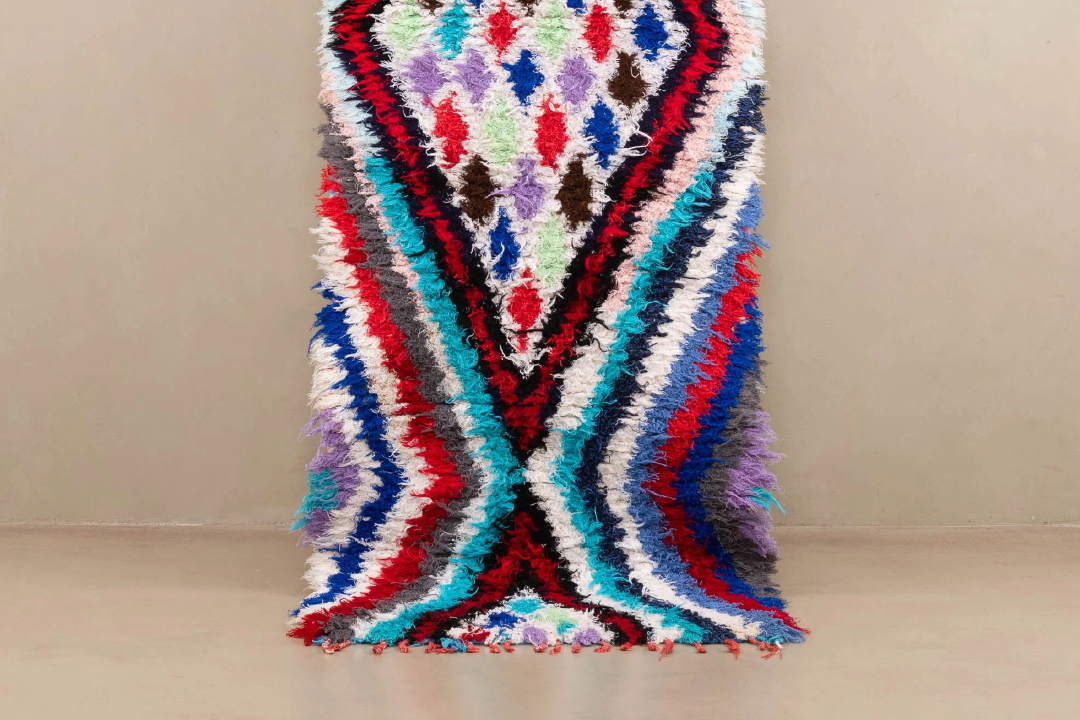
Identifying Authentic Moroccan Rugs
In today’s market, distinguishing authentic Moroccan rugs from imitations requires careful attention to several key factors:
Materials and Construction
Authentic Moroccan rugs are primarily crafted from natural materials, particularly wool from local sheep. The wool should feel soft yet sturdy, with slight variations in texture that indicate hand-processing. Machine-made rugs, in contrast, typically show uniform texture throughout.
Imperfect Perfection
One of the most telling signs of authenticity lies in the “imperfections” of the rug. Hand-woven rugs naturally display slight variations in pattern, color, and weave—characteristics that actually enhance their beauty and uniqueness. Perfect symmetry often indicates machine production.
Natural Dyes
Traditional Moroccan rugs feature colors derived from natural sources: indigo for blue, henna for red, saffron for yellow, and mint for green. These natural dyes create subtle variations in color that synthetic dyes cannot replicate. The colors should appear rich but slightly muted, never artificially bright.
Knot Density and Pattern
Turn the rug over and examine the backing. Authentic Moroccan rugs reveal their knot patterns on the reverse side, with each knot visible and slightly irregular. The density of knots varies by style but should be consistent throughout the piece.
Styling Moroccan Rugs in Modern Homes
The versatility of Moroccan rugs makes them exceptional additions to various interior styles. Here’s how to incorporate them effectively:
Living Spaces
In living rooms, a Beni Ourain rug can anchor a seating area while adding texture and warmth. Its neutral palette allows for bold furniture choices while maintaining visual harmony. Position larger rugs so that at least the front legs of all furniture rest on them to create a cohesive space.
Bedrooms
Azilal or Boujaad rugs work beautifully in bedrooms, adding color and pattern without overwhelming the space. Place them partially under the bed, allowing the intricate designs to frame the sleeping area while adding warmth to your feet when rising.
Dining Areas
Kilim rugs, with their flat weave and durability, are ideal for dining areas. Choose patterns that complement your dining furniture while being forgiving of occasional spills. Ensure the rug extends at least 24 inches beyond the table on all sides to accommodate chairs.
Mixed Styles
Don’t be afraid to mix different types of Moroccan rugs within your home. The key is maintaining a balance of colors and patterns. Use more subtle pieces in primary living areas and save the boldest designs for smaller spaces or as wall hangings.

Care and Maintenance
To preserve your Moroccan rug’s beauty:
- Rotate regularly to ensure even wear
- Vacuum gently without using beater bars
- Address spills immediately by blotting, never rubbing
- Professional cleaning every 3-5 years
- Store rolled, never folded, in a cool, dry place
Why Moroccan Rugs Endure
The enduring appeal of Moroccan rugs lies in their remarkable ability to transcend time and trends. Unlike mass-produced alternatives, each piece carries the spirit of its maker and the wisdom of ancient traditions. Their sustainable production methods, using natural materials and dyes, align perfectly with modern environmental consciousness.
Moreover, these rugs represent more than just beautiful décor—they’re investments in cultural preservation and artisanal craftsmanship. By choosing an authentic Moroccan rug, you’re not only acquiring a unique piece of art but also supporting traditional communities and helping preserve centuries-old weaving techniques for future generations.
In an era of mass production and fleeting trends, Moroccan rugs stand as testaments to the timeless appeal of handcrafted beauty. Whether used as statement pieces in minimal modern spaces or layered in eclectic interiors, these rugs continue to captivate and inspire, proving that true craftsmanship and authentic cultural expression never go out of style.
Ready to discover your perfect Moroccan rug? Browse our collection at moroccanrug.net,

